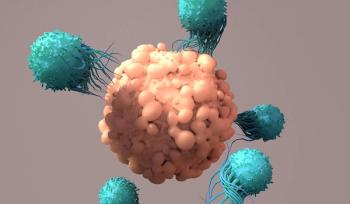
- BioPharm International-02-01-2007
- Volume 20
- Issue 2
From the Editor: Cloning and Biotech Progress
The recent FDA decision that meat from cloned animals is safe for human consumption seems logical enough. A protein is a protein. But even if we can eat such meat, it doesn't necessarily make economic or ecological sense to do so.
Cloning and Biotech Progress
The recent FDA decision that meat from cloned animals is safe for human consumption seems logical enough. A protein is a protein. But even if we can eat such meat, it doesn't necessarily make economic or ecological sense to do so.
Laura Bush
At about $15,000 per clone, no one plans to clone animals for slaughter. Instead, ranchers will clone their best breeding stock to increase their control over the results. Cattle reproduction is already highly controlled, however, through artificial insemination, at a reasonable cost (about $15 for a straw of semen). So even if the price of cloning quickly dropped to $6,000, as some have predicted, what would be the benefit of this enormous investment?
The argument, presumably, is that it could make our meat production systems more productive. The fact is, we don't need more productivity. In his recent book about the American agriculture system, The Omnivore's Dilemma, Michael Pollan explains how improving yields in American agricultural operations have resulted in a slew of economic and environmental problems.
Years ago, it took four to five years to fatten up a steer for slaughter. Now it takes 14 to 16 months. This productivity growth in animal systems began with improved plant yields. In 1920, an acre of land produced about 20 bushels of corn; now it yields 200. This increase was made possible by hybrid corn species that can be planted closely together, and the development of nitrogen fertilizers (which made crop rotation unnecessary, leading to monoculture). The result is more corn than we could possibly eat. So we invented new ways to consume it, such as converting it into high fructose corn syrup and ethanol, and feeding it to cattle.
But feeding corn to cattle creates a whole series of problems. Cattle are not evolved to digest corn. Corn makes their rumens bloat from excess gas, which can causes acidosis, leading to various diseases and liver infections. So the cattle receive a lot of antibiotics, contributing to bacterial resistance to critical human drugs. Eating corn also makes cows' rumens acidic, which has led to the growth of deadly new strains of E. coli that can survive in humans' acidic stomachs. To minimize the time the cattle spend on this unnatural diet, their feed is crammed with supplements (e.g., fat, hormones, protein) that make the cattle fatten up as fast as possible. Hence the 16 months to slaughter. The speed is as much a requirement of this system as a benefit.
Ironically, robust agricultural yields also have hurt farmers' livelihoods, as high crop yields have made corn prices plummet (a result of supply and demand). Today, the market price of a bushel of corn is lower than the cost to grow it. And since the farmer can't afford to grow corn for his own cows, cattle are no longer raised on farms, where the animal waste could be used as fertilizer. Instead, the animals are sent to enormous feed lots where their waste pollutes our waters. (That waste couldn't be used anyway; it is so high in nitrogen and phosphorus that it would kill the crops.)
Even more baffling, our agriculture system results in a net loss of energy. Manufacturing nitrogen fertilizers requires high temperatures, produced by burning petroleum—so much petroleum, in fact, that the energy consumed in producing a bushel of corn is higher than the energy value it yields as food. Meat, being higher up the food chain, consumes even more energy.
We don't need higher productivity in agriculture, or more human control over the biological processes involved. In the biopharmaceutical industry, we view genetic engineering with affection. But as members of the biotech community, we must evaluate each biotech application on its own merit. We should support the forward march of science not just because we love technology, but because it truly represents progress. Cloning animals for agricultural purposes does not represent progress.
Laura Bush is the editor in chief of BioPharm International,
Articles in this issue
almost 19 years ago
Regulatory Beat: Quality Standards to Reshape Manufacturingalmost 19 years ago
Street Talk: CEO Paychecks: How They Are Determinedalmost 19 years ago
Outsourcing: Biologics Manufacturing: The CMO Advantagealmost 19 years ago
Final Word: Should You Need FDA Approval to Make Manufacturing Changes?almost 19 years ago
China Today: Pharmaceutical Distribution in Chinaalmost 19 years ago
Validation & Compliance: Using Risk Analysis in Process ValidationNewsletter
Stay at the forefront of biopharmaceutical innovation—subscribe to BioPharm International for expert insights on drug development, manufacturing, compliance, and more.





